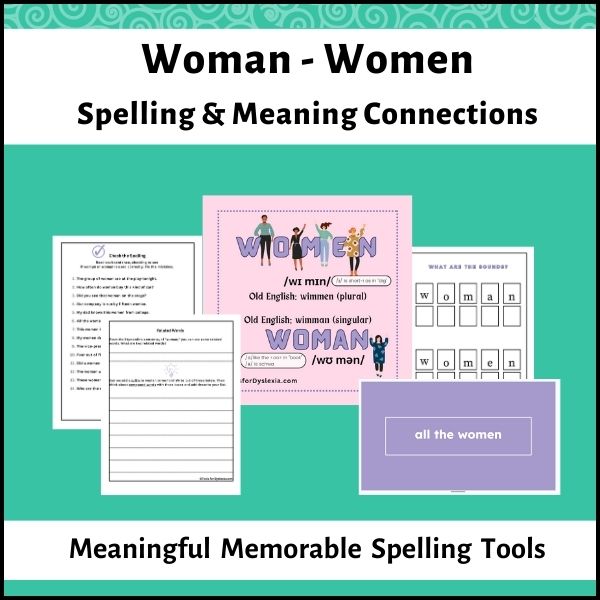Why Is It Spelled This Way: Women
“Why isn’t ‘women’ spelled like this?” Then my fourth-grade student writes <wimen>. Spelling questions from students build their understanding and mine. Every Time!
Each “Why isn’t ____ spelled like _____?” is a great question. Let’s Check It Out!
I don’t remember investigating the spelling of “women” or “woman” before. Can I just say it was kind of thrilling to see the Old English spellings!

Investigating the Spelling of “Women”
At Etymonline.com, we learned that in Old English the word for one adult female had been spelled <wimman> and the plural form was <wimmen>. They were spelled more like my student expected.
In approximately the 8th century, the word had been wifman from wif or wyf for a female. As you would expect, it’s connected to our modern word: wife. But there’s a note in the entry that wif/wyf didn’t necessarily mean a married woman. It could just be a woman.
Think about midwife, which is not necessarily a married woman. I hadn’t connected the “wife” in “midwife” before. It’s interesting that midwife has the orthographic denotation of someone who is “with” (mid-) the “woman” (wife).

Spelling Understanding
The Chambers Dictionary of Etymology states that before 1200 the spelling for one adult female was spelled wumman.
Looking at wumman and wimman, my student said he knew why the spelling changed to <woman>. He then related that the handwriting style of scribes probably made it too hard to distinguish an <i> or a <u> from the <w> and <m>. Hurray for him remembering the conversations we’ve had about spelling and Blackletter minims. Read more about these on Mary Beth Steven’s blog.
Chambers tells us that the <woman> and <women> spellings became regular around 1400.
Pronunciation Changes
Etymonline.com shares that the pronunciation of “woman” evolved sometime in the Middle English period (1200 to 1500), possibly “by the rounding influence of <w>”. Notice what your lips do when you say /w/. They round.
Chambers theorizes that the vowel pronunciation difference distinguished the singular from the plural forms possibly in a similar fashion to the way we distinguish singular “foot” from plural “feet”.
Tracking a historical change in spelling is easier from written texts than a historical change in pronunciation since there aren’t thousand-year-old recordings of speech.
But what made my day when we researched this together was hearing my student’s explanation. He shared what he knows with his own understanding that there are reasons for spelling. He is learning that our spelling system makes sense. And that is making him a more confident speller!
For more reading and spelling practice to help your students distinguish “woman” and “women, check out these activities.


